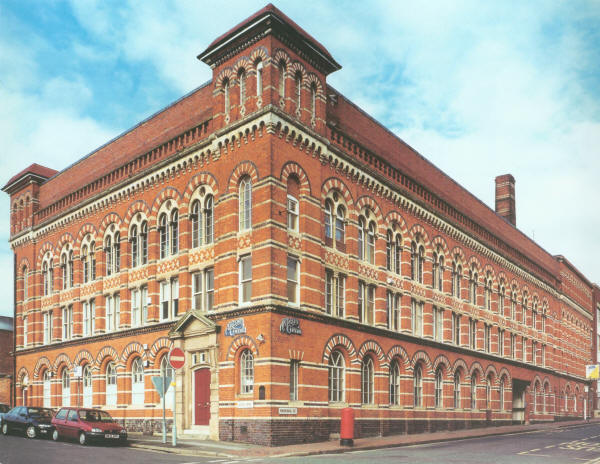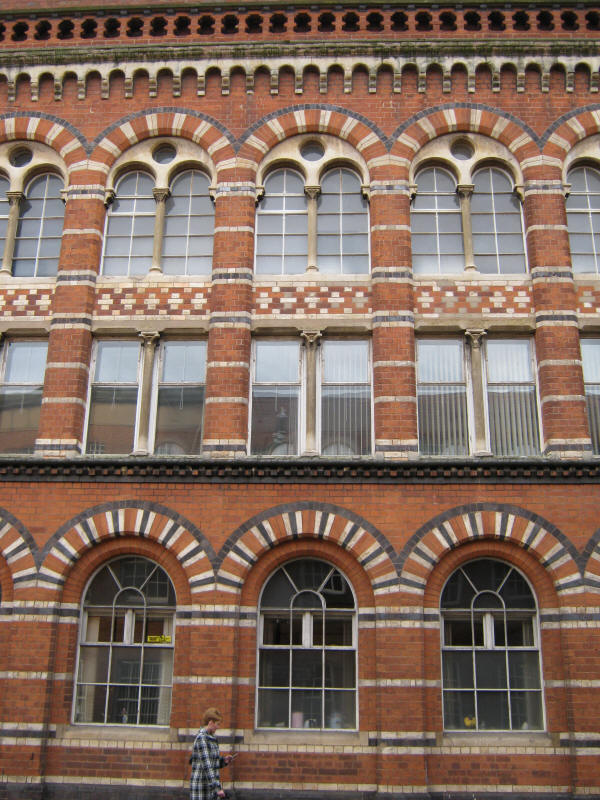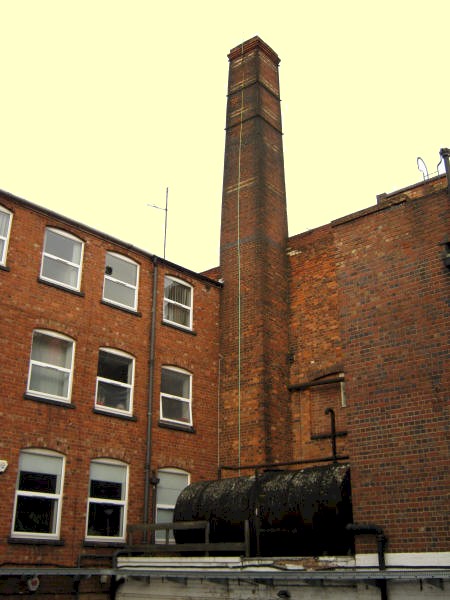The Argent Centre, Birmingham:
William Edward Wiley's
Albert Works and Turkish baths

After the Turkish baths closed in 1870, the building remained a pen factory for many years before it was sold. It was then used as a warehouse for a large scientific equipment company followed by a period when it was empty. It is now Birmingham Jewellery Quarter's Argent Centre, shown here in the late 1990s.
Externally the building is not too different from how it appeared when it was first built. The most notable differences being the demolition of the corner towers and the building of a parapet above the roof behind the original rather more elegant balustrade.

Part of the polychrome brick chequered arches and panels, and black and white banding. The building’s arcaded elevations are said to have been inspired by Florentine-Lombard early Renaissance palazzi

At the rear, and in the corner of the L-shaped building, still stands the chimney through which the combustion fumes were extracted from the original factory boilers.
These served two purposes: first, to generate steam to drive the machines in the factory and feed the radiators used to heat it; second, to provide heat for the Turkish bath by drawing in fresh air from outside the building, and passing it over the heating tubes through ducts into the various hot rooms of the baths.
This page enlarges an image or adds to the information found below:
Wiley's Turkish baths

Victorian Turkish Baths: their origin, development, and gradual decline



Comments and queries are most welcome and can be sent to:
malcolm@victorianturkishbath.org
The right of Malcolm Shifrin to be identified as the author of this work
has been asserted by him
in accordance with the Copyright, Designs and Patents Act 1988
© Malcolm Shifrin, 1991-2023